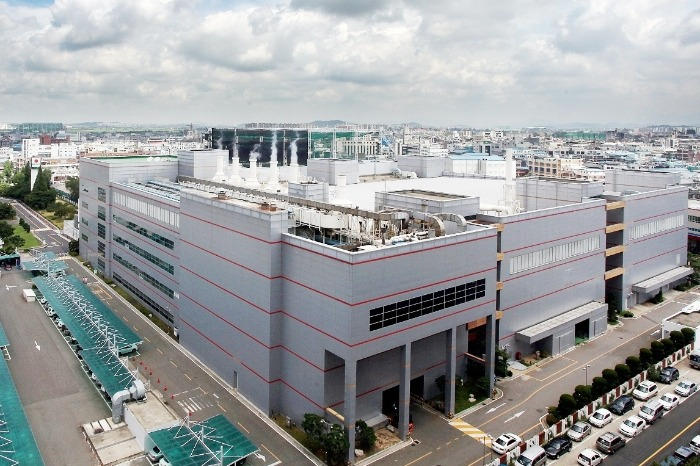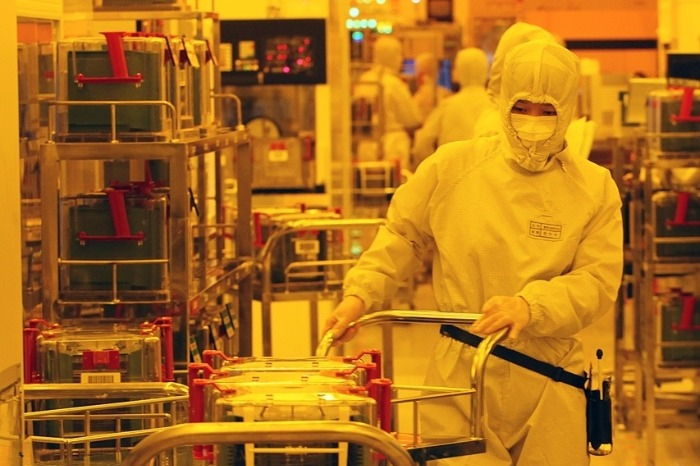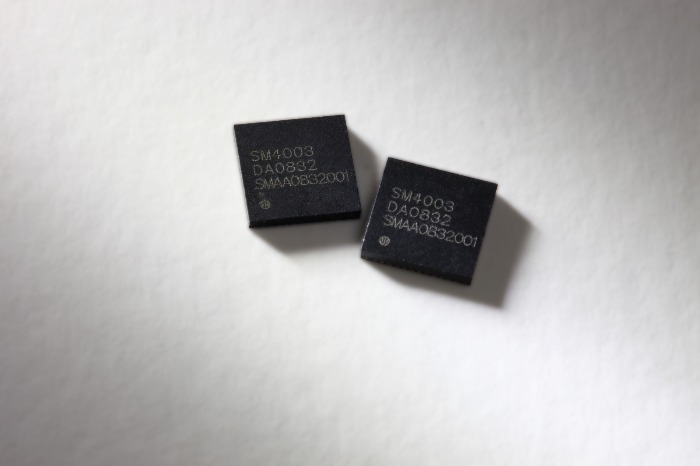Korean chipmakers
DB HiTek mulls $780 mn capex in foundry after fabless demerger
The S.Korean firm aims to bolster its enterprise value to 6 trillion won ($4.7 billion) with the separated businesses
By Mar 23, 2023 (Gmt+09:00)
3
Min read
Most Read
LG Chem to sell water filter business to Glenwood PE for $692 million


Kyobo Life poised to buy Japan’s SBI Group-owned savings bank


KT&G eyes overseas M&A after rejecting activist fund's offer


StockX in merger talks with Naver’s online reseller Kream


Mirae Asset to be named Korea Post’s core real estate fund operator



South Korea’s chip foundry company DB HiTek Co. is mulling about 1 trillion won ($780 million) in capital expenditures to enhance its foundry capabilities after pushing ahead with a demerger of its fabless unit into a fully owned subsidiary despite strong opposition from its minority shareholders.
“Our foundry business will be reinforced as a pure foundry company that handles premium power semiconductors, whereas the split-off subsidiary will focus on OLED display driver integrated circuit (DDIC) chips,” DB HiTek said in a news release on Thursday. “This will lead to the growth of both companies.”
The company is considering spending about 1 trillion won to build a new foundry factory to enhance its foundry capabilities, it added. It is currently reviewing various sites that could create long-term synergy with its old facilities, according to an unnamed company official.
With the two separated units, DB HiTek aims to bolster its enterprise value to 6 trillion won -- 4 trillion won for the foundry unit and 2 trillion won for the brand subsidiary, the company said.
Its detailed business plan for the two separated businesses was unveiled for the first time on Thursday since March 7 when it decided to put the plan to split off its fabless business into a fully owned subsidiary to a vote at an annual shareholders’ meeting on March 29.
Its shares fell 1.2% to end at 47,400 won on Thursday, underperforming the broader Kospi market that added 0.3% to 2,424.48.
UNHAPPY SHAREHOLDERS
This is the second attempt for DB HiTek to split off its fabless business from its foundry business.
It folded the previous plan in September last year due to strong opposition from its shareholders worried about the possible devaluation of the parent foundry company after the separation.

Its minority shareholders are still unhappy about the separation plan for the same reason.
To appease them, DB HiTek has decided not to list the demerged fabless unit on the public market for five years, a plan that has failed to win shareholders’ approval.
Without the business split into two, it is hard to spur the growth of either the foundry or the fabless business, the company said.
DB HiTek reiterated that it is necessary to operate the foundry and brand businesses independently not only for their long-term growth but also to avoid a conflict of interest with its foundry customers from having both the foundry and the fabless businesses under one roof.
FOUNDRY FOR NEXT-GEN CHIPS, FABLESS FOR OLED DDIC
After the demerger, DB HiTek will use massive facility investment to enhance its contract chip production capacities.

It will diversify its foundry lineup beyond the mainstay power semiconductors by adding high-voltage products and high-value-added specialized sensors.
Especially, it will develop next-generation SiC and GaN semiconductor technology, the demand for which is rising against silicon chips.
The company also projected the spinoff would allow it to ramp up its foundry production capacity by 15,000 sheets monthly even without the extra spending, which is equivalent to the effect of about 300 billion won worth of facility investment.
Thanks to this, DB HiTek is expected to generate an extra 100 billion won in annual sales.
The new, standalone brand subsidiary will expand its organic light-emitting diode (OLED) DDIC lineup for smartphones and develop OLED DDICs for automotive and TV uses.
It will also enhance its high-speed/low-power consuming liquid crystal display (LCD) products to compete against Chinese rivals in the LCD sector.
It is seeking to make inroads into the mini-LED TV chip market to diversify its product portfolio, the company added.
Write to Sungsu Bae at baebae@hankyung.com
Sookyung Seo edited this article.
More to Read
-

-
 Korean chipmakersS.Korea's DB HiTek to split off fabless, bulk up foundry business
Korean chipmakersS.Korea's DB HiTek to split off fabless, bulk up foundry businessMar 08, 2023 (Gmt+09:00)
1 Min read -
 ElectronicsDB HiTek to expand high value-added specialized image sensor business
ElectronicsDB HiTek to expand high value-added specialized image sensor businessJan 31, 2023 (Gmt+09:00)
1 Min read -
 Korean chipmakersChip foundry DB HiTek pulls the plug on fabless division spinoff plan
Korean chipmakersChip foundry DB HiTek pulls the plug on fabless division spinoff planSep 27, 2022 (Gmt+09:00)
1 Min read -
 Korean chipmakersDB HiTek develops automotive power semiconductor tech
Korean chipmakersDB HiTek develops automotive power semiconductor techSep 08, 2022 (Gmt+09:00)
1 Min read -
 Korean chipmakersFoundry player DB HiTek: An ugly duckling becomes a golden swan
Korean chipmakersFoundry player DB HiTek: An ugly duckling becomes a golden swanApr 04, 2022 (Gmt+09:00)
2 Min read
Comment 0
LOG IN


